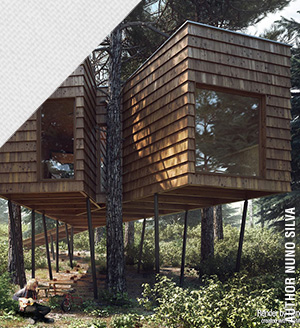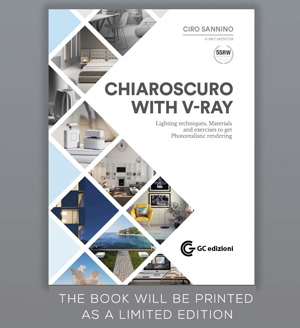In this lesson I’ll talk about complex Materials.

LESSON#39 – Complex V-Ray Materials (Step3)
- HD VIDEO / Narrated / 15′
- MAX FILES to download with all the V-Ray settings
- Uniform surface properties;
- Mapping reflections and glossy;
- Procedure to control complex mapping;
- How to save in a library;
- Subdivs in 5SRW;
- How to light dark materials;
- Light balance and Light reflections;
- Quick proxy objects.
This is the image you’ll be able to create at the end of this training:
[private Premium|Premium-1year]
Framing & Light Balance – Step 1-2
Complex materials are always used in a complicated way. Too many attemps to get a result and most of times the result is different from our expectations. Is there a way to control this process? Yes it is! Just use Black or White box for reflections and always leave 1,0 as glossy. Learn why and how to hadle this simple and comfortable way to manage channels.
Watch the next video to learn more about complex materials in V-Ray:
 CONCEPTS:
CONCEPTS:
- Mapping a channels means get a different value on a surface;
- We usually map diffuse witha textures, to get different colors on the surface;
- We can map Reflections and Glossy to get different surface property at any point;
- Usually mapping diffuse/reflection/glossy prodice ultra-realistic materials;
- Use reflection box BLACK and reduce channel value to reduce reflectiviness;
- Use reflection box WHITE and reduce channel value to increase reflectiviness;
- Use glossy to 1,0 and reduce channel value to control the glossy impact;
- Add Ray lights just to bring materials to life;
- Use low power or cover different area to do not affect the light balance;
- Put the V-Ray lights for reflections out of the frame;
- Don’t use “invisible”option! Consider you’re in a real stage;
- Use proxy to quickly ad a carpet;
- Proxies are dinamically loaded in the memory.
COMPLEX MATERIALS:
Every material in this lesson has been created as combinantion of 3 channels; diffuse, reflections and glossiness. You can achieve the same result in many different ways, in fact too often artists create so “confused” materials with a good result but no control, for this reason those materials are usually hard to understand.
Use the tips illustrated in the video and get this complex – but easy to understand – materials:
 Â EXERCISE:
 EXERCISE:
In the START file, light balance is complete and the scene is ready to add new complex materials created by you.
Download START fine and textures. Don’t forget to put them into the same folder:
To verify your exercise, please downlad the final version:
[/private]
 / Also Learn Corona Renderer
/ Also Learn Corona Renderer



Awesome. Thanx : )
Hi Ciro, the image of the white sofa material configuration it can’t be view it, please reupload it again to see the configuration. By the way excellent lesson, Thanks!!
Hi again Ciro, I use another web browser to view the image, Thanks anyway!!
No Problem… great! 🙂
Cuando guardo los materiales en una nueva libreria y trato de aplicarlos en otro documento me carga los materiales pero los jpegs no los encuentra!! las texturas tienen que estar junto a donde se guarda la libreria??
Gracias!
Exactamente luis… tambien esta escrito al fondo della leccion: “Don’t forget to put them [max file and textures] into the same folder”.
nice way.thanks ciro